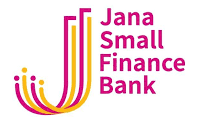
Jana Small Finance Bank Limited -IPO DETAILS
| IPO Date | Feb 07, 2024, to Feb 09, 2024 |
| Price Band | ₹393 to ₹414 per share |
| Lot Size | 36 Shares |
| Issue Size | ₹570.00 Cr. |
| Allotment Date | 12 February 2024 |
| Listing Date | 14 February 2024 |
Company Overview
Established on July 24, 2006, and officially designated as a non-banking finance company (“NBFC”) on March 4, 2008, Jana Small Finance Bank stands as the fourth-largest Small Finance Bank based on assets under management (AUM) and deposit size as of September 2023. Providing an array of loan products catering to individuals and medium/small-scale enterprises, the bank offers secured business loans, MSME loans, microloans against property, affordable housing loans, term loans, gold loans, and two-wheeler loans. In the unsecured loan category, it extends agricultural loans, individual and micro business loans, and group loans specifically for women. As of March 31, 2023, the company has recorded gross advances amounting to Rs 180,007.41 million.
Boasting an AUM of Rs 23,029.56 crore as of September 30, 2023, Jana Small Finance Bank operates through 771 banking outlets across 22 states and two union territories, including 278 outlets in unbanked rural centers. Since its inception in 2008, the bank has served approximately 12 million customers, including 4.87 million active customers. Additionally, it functions as a third-party corporate agent for general non-life insurance, life insurance products, and health insurance products.
Objective of the IPO
Here are a few quick reasons why company is going public:
1. The bank intends to employ the net proceeds from the fresh issue to reinforce its Tier-1 capital base, addressing the bank’s prospective capital needs. Additionally, the funds generated from the fresh issue will be allocated to cover expenses related to the offering. The bank anticipates experiencing advantages from listing its equity shares on the stock exchanges.
Company Financials
| Period Ended | Total Assets | Total Revenue | Profit After Tax | Net Worth | Reserves and Surplus | Borrowings |
| 31-Mar-21 | 19078.66 | 2720.74 | 72.26 | 1100.77 | 914.09 | 4815.32 |
| 31-Mar-22 | 20188.71 | 3062.37 | 17.47 | 1184.56 | 999.29 | 4509.83 |
| 31-Mar-23 | 25643.69 | 3699.88 | 255.97 | 1777.07 | 1472.28 | 6277.46 |
Key Performance Indicator
| Market Cap. (Cr.) | 4330.04 | EPS (Rs) | 40.77 |
| ROE | 16.78% | Debt/Equity | 3.49 |
| P/BV | 1.28 | P/E | 10.15 |
Pros
- Due to the government’s initiative for financial inclusion, small finance banks (SFBs) are finding increased opportunities to lend to the small and medium sectors of society. Jana Small Finance Bank is capitalizing on these prospects, particularly in the low-income segment, experiencing credit growth with improved profitability margins.
- To mitigate risks associated with various factors, the bank has embraced an integrated risk management approach. This involves identifying, measuring, assessing, and managing key risks, including credit, operations, liquidity, interest rate, market, cyber and information security, and reputational risks. The bank has established detailed risk management policies and a governance structure for each type of key risk
- As a digitally oriented bank, Jana Small Finance Bank predominantly provides services in digital form, supported by integrated multi-channel operations. The bank’s new products leverage application programming interface (API) technology, enhancing operational efficiencies and delivering high-quality services while seamlessly integrating into the broader ecosystem through the API framework.
- With over 16 years of experience in serving underbanked and underserved customers, Jana Small Finance Bank focuses on catering to this customer segment and the MSME sector. The bank extends its banking services directly to customers’ doorsteps in both urban and rural areas, contributing to financial inclusion for the underbanked and underserved demographics.
Cons
- The banking sector in India, including Small Finance Banks (SFBs), operates under strict regulations set by the Reserve Bank of India (RBI) to ensure transparency and security in financial services.
- In the SFB segment, there is intense competition, as highlighted by the presence of 140 commercial banks, 43 regional rural banks, 2 local area banks, 6 payment banks, and 12 SFBs across the country, according to the RBI’s Annual Report 2022-23.
- Unforeseen events, such as the COVID-19 pandemic, have exposed risks in the business models of many SFBs. Their reliance on ‘high-touch’ operations and personalized doorstep services, particularly for microfinance customers, has made them vulnerable during economic downturns.
How to Apply for this IPO
1. Go to https://ipo.adityatrading.in/
2. Enter your Client ID
3. Enter the OTP received in your registered mobile number.
4. Choose the IPO and click on apply button.
5. Enter the UPI ID, Quantity, and Cut off the price.
6. Click on submit button
7. Confirm the mandate request received on your phone by entering the UPI Pin.
You can also watch our youtube video on “How to Apply on IPO” by clicking on the link “https://www.youtube.com/watch?v=1qOI8dCpl1I&ab_channel=ATS”


